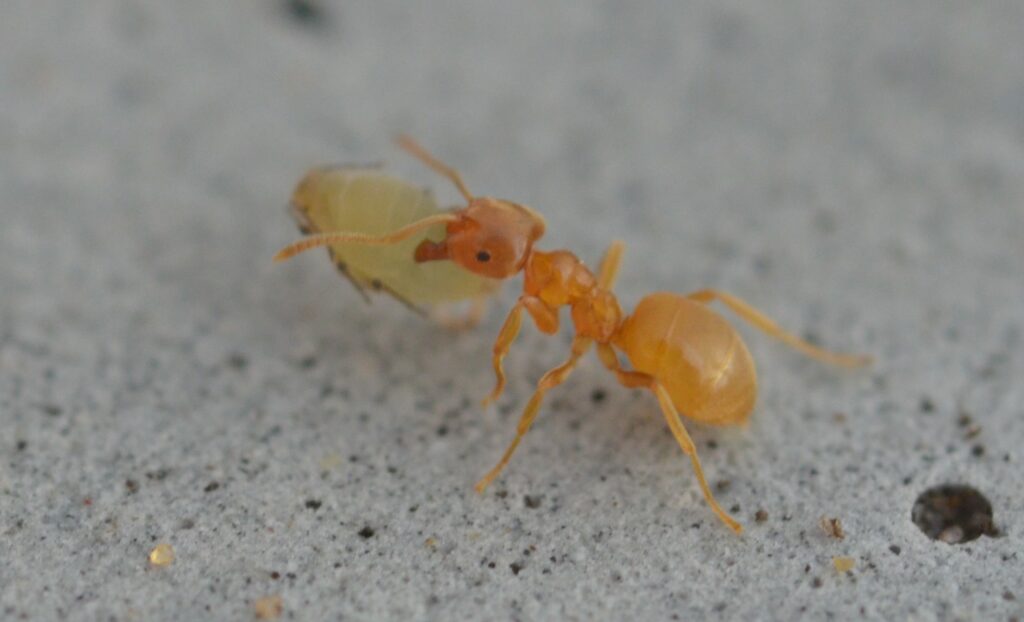
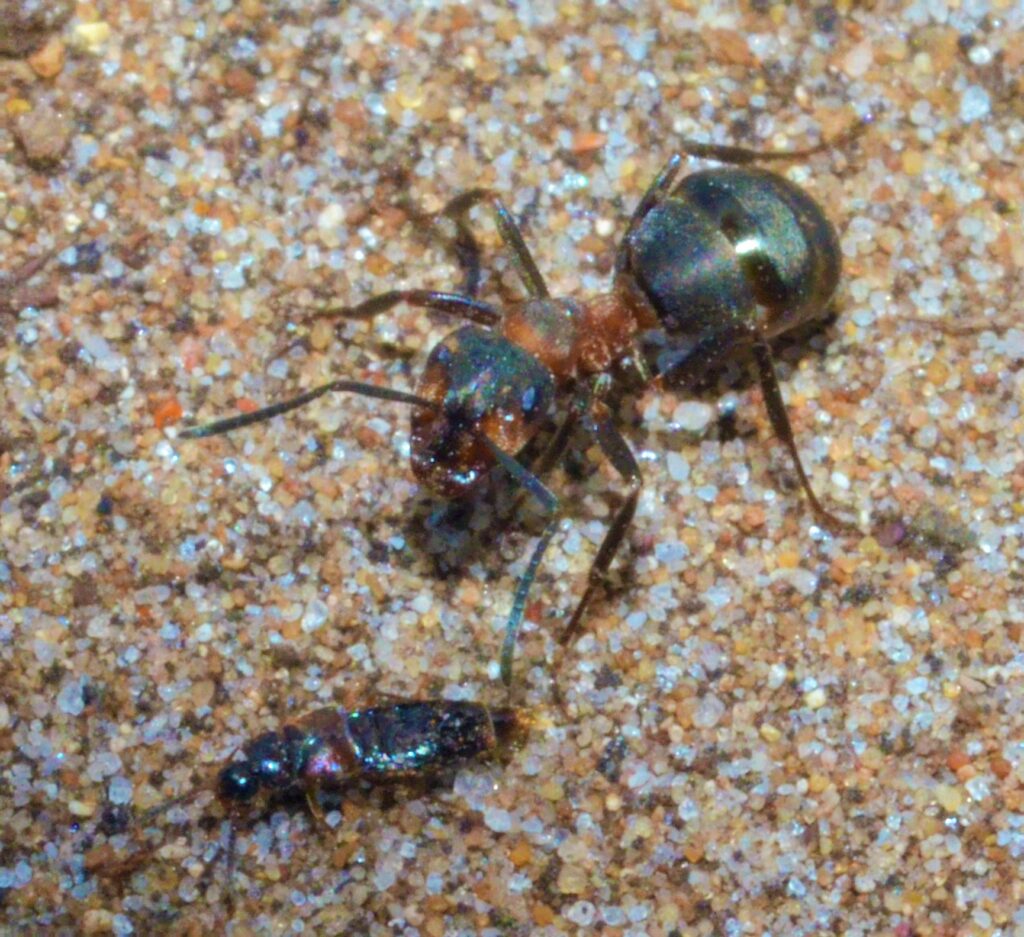

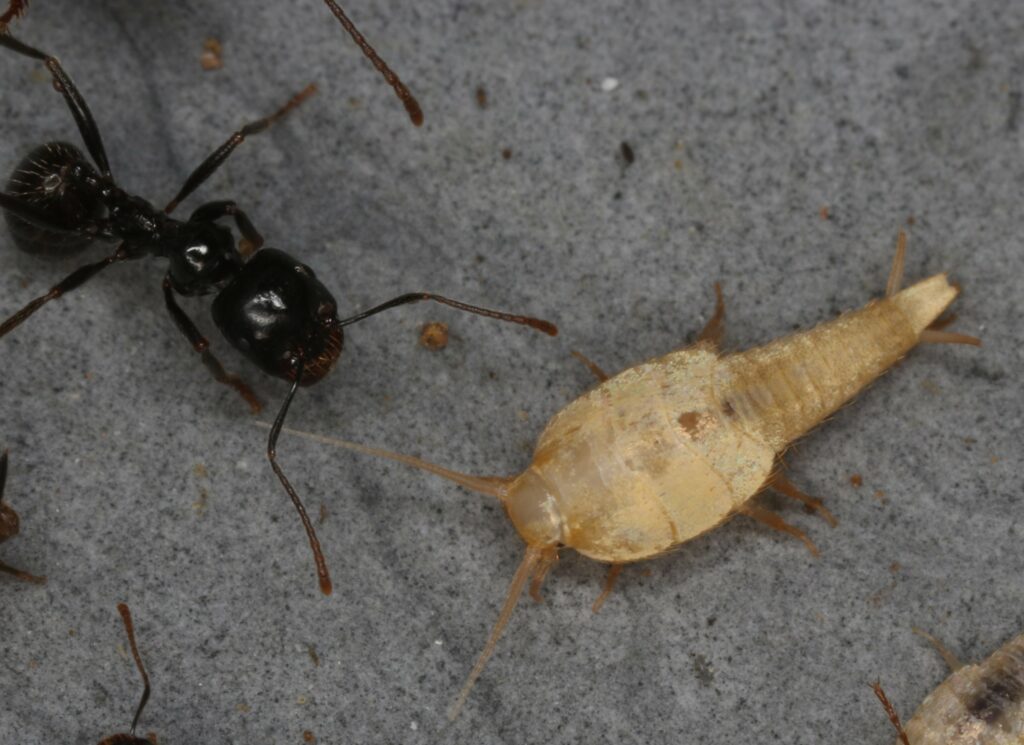
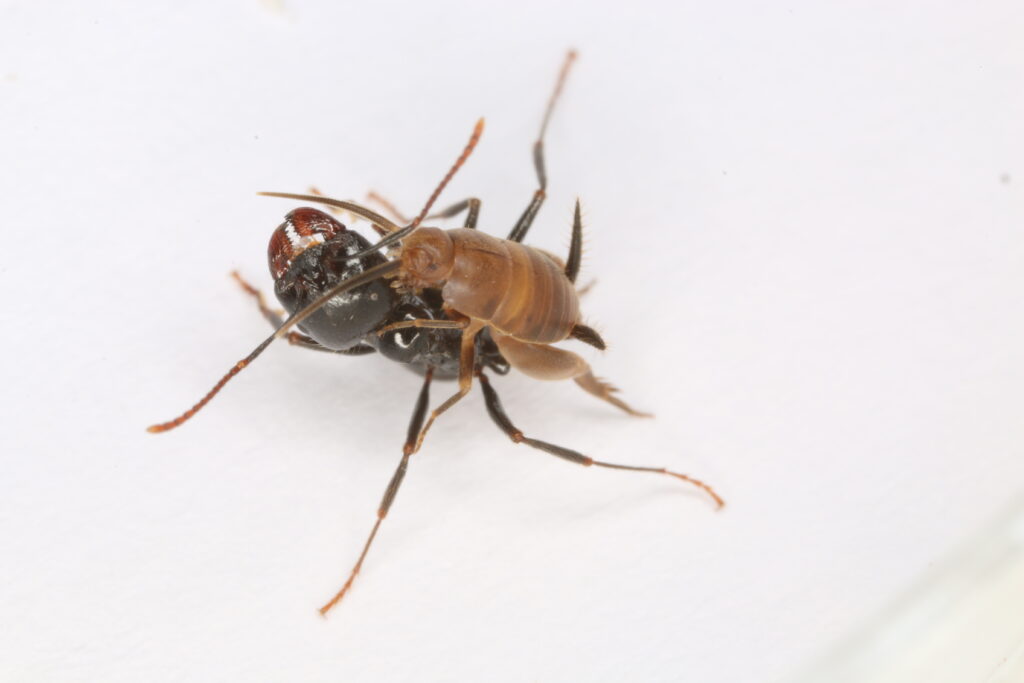
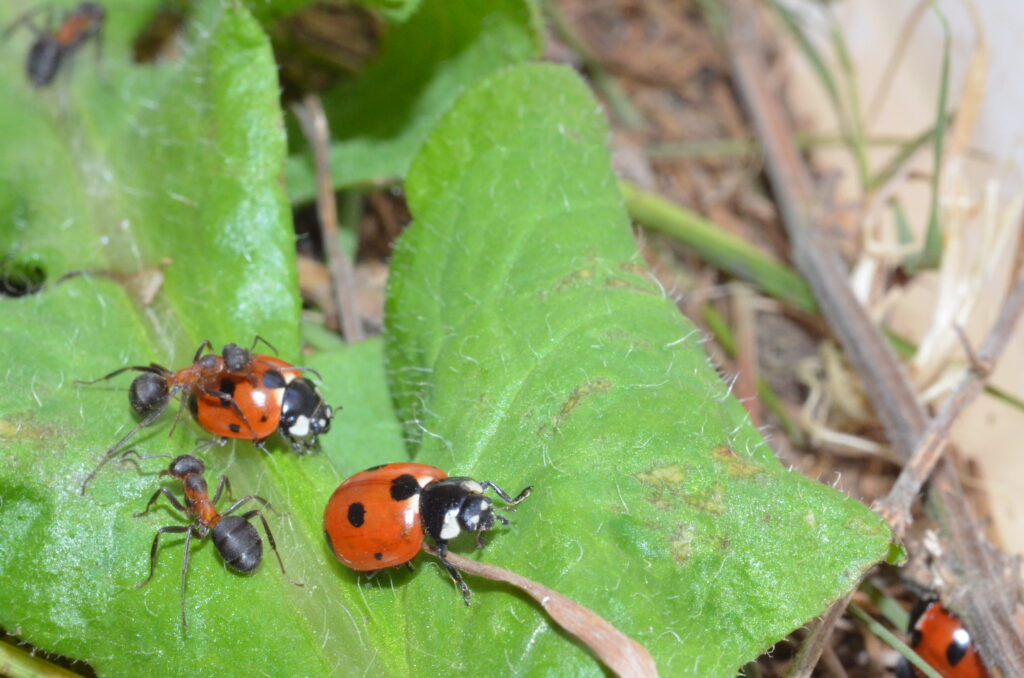
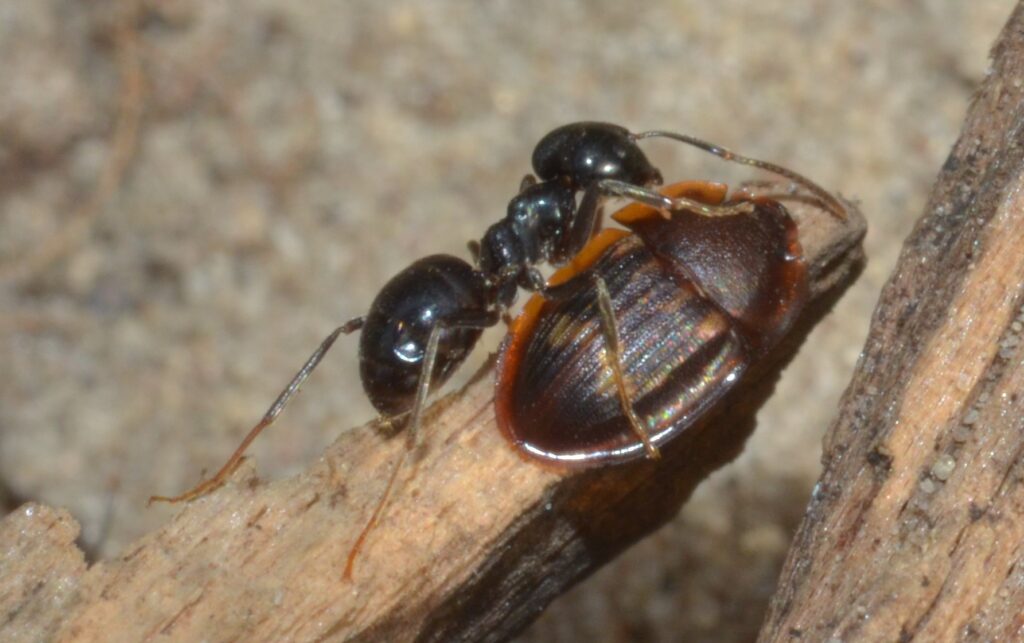
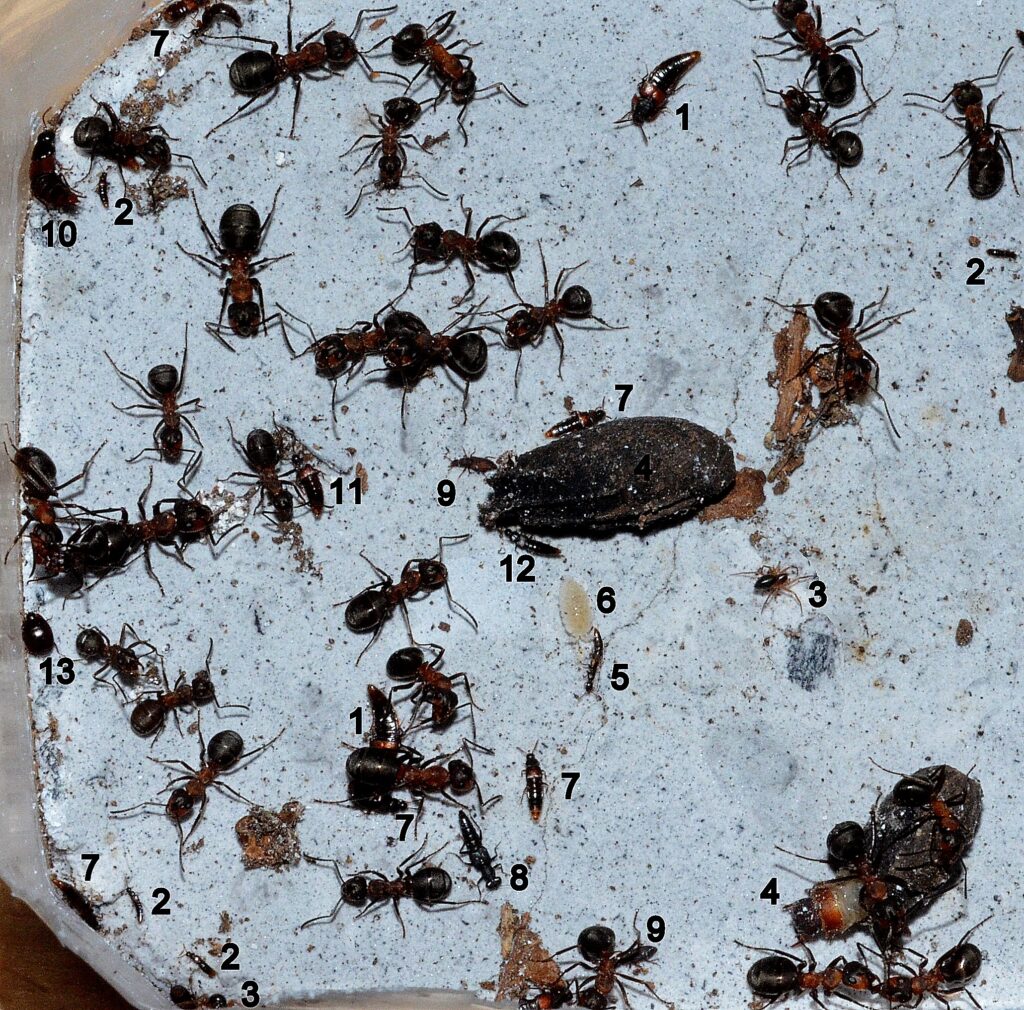
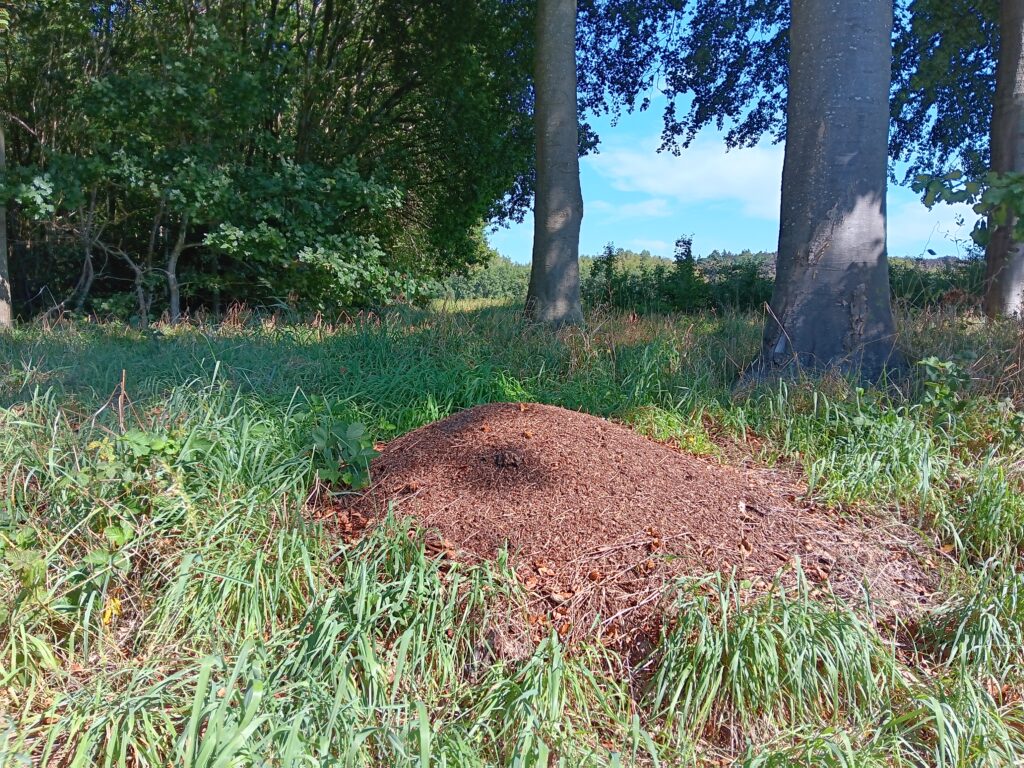
Research
My research centres on the ecology of arthropods that strictly live in and around ant nests. These fascinating organisms are known as ant guests or myrmecophiles. An introduction to these fascinating organisms can be found here.
In my PhD research (joint affiliation KuLeuven and RBINS, T. Wenseleers and W. Dekoninck, defended Sept 2016), I explored the strategies that myrmecophiles employ to thrive in hostile ant nests. As a model system, I mainly focused on the community of myrmecophiles associated with mound building red wood ants (Formica rufa group). I was able to disentangle the highly different chemical, behavioral and trophic strategies used in the symbiont community of wood ants. My postdoctoral research (Kuleuven, Ugent and UNamur) marked a transition from a focus on behavioral and chemical ecology (interactions between the myrmecophiles and the ant host) to a community ecology perspective in myrmecophiles.
Ant associates form small and spatially delineated communities that strongly interact with their ant host, but I showed in different works that they also interact with co-habiting symbionts through competition, predation and dispersal. Ant nests may thus house realistic assemblages of symbiont species comprising different trophic levels and functional groups (predators, scavengers, detritivores).
In recent work, I could clearly demonstrate that these local symbiont communities are connected through dispersal (“metacommunities”). Moreover, I was able to show that functional groups in the community have different emigration rates resulting in different colonization dynamics. Communities also undergo succession patterns with more specialized and more even communities in older nests. Every ant nest can thus be considered as a biological island (“microcosm”) which supports a symbiont community which in turn interacts with other neighbouring ant microcosms in spatially structured networks.
I have studied the arthropod community associated with the enigmatic mound building red wood ants since 2012. While this remains my primary model system, I’m progressively expanding my research to encompass various research systems across temperate Europe, the Mediterranean, and tropical Africa.
To study my research questions, I use a wide variety of approaches including field experiments, lab experiments, chemical analyses, molecular techniques and theoretical predictions.
In the coming years, I want to explore how ant-symbiont communities operate and adapt when exposed to human-induced changes. While the effects of global change are typically studied in isolation on single species or iconic groups, the response of entire multi-trophic level communities and networks remains poorly understood. The study of ant-symbiont microcosms and networks can address this gap. I will test and predict community-wide responses of these natural model systems to various anthropogenic stressors, such as eutrophication and habitat fragmentation.
Projects
Projects involved:
- FNRS Chercheur Qualifié: Effects of anthropogenic pressures on the functioning of ant symbiont communities.
- MonitAnt Biodiversa+ project: Developing a European-level Monitoring strategy for mound-building Formica Ants and symbiont communities residing in nest mounds. Project Leader: Prof. Heike Feldhaar, University of Bayreuth. https://www.monitant.de/
- VLIR-UOS project: Challenges and opportunities for a sustainable socio-ecology in the Katangese Copperbelt Area – Biodiversity and climate change. Project leader: Prof. Pascal Boeckx, Ghent University.
Supervision
Post doc: Dr. Nathan Lecocq de Pletincx (together with Dr. Wouter Dekoninck, RBINS) is hired on the Biodiversa+ MonitAnt project. He will mainly focus on molecular tools to assess genetic structuring in red wood ants and associated myrmecophiles in space and time.
PhD: Trésor Kisimba: Assembly and functioning of termite communities along a forest recovery gradient in Miombo forest. (VLIR-UOS project)
Current Master thesis student: Aurélie Van Engeland (together with Prof. Nicky Wybouw, Ugent): She studies the distribution and impact of some overlooked symbionts living with red wood ants.
